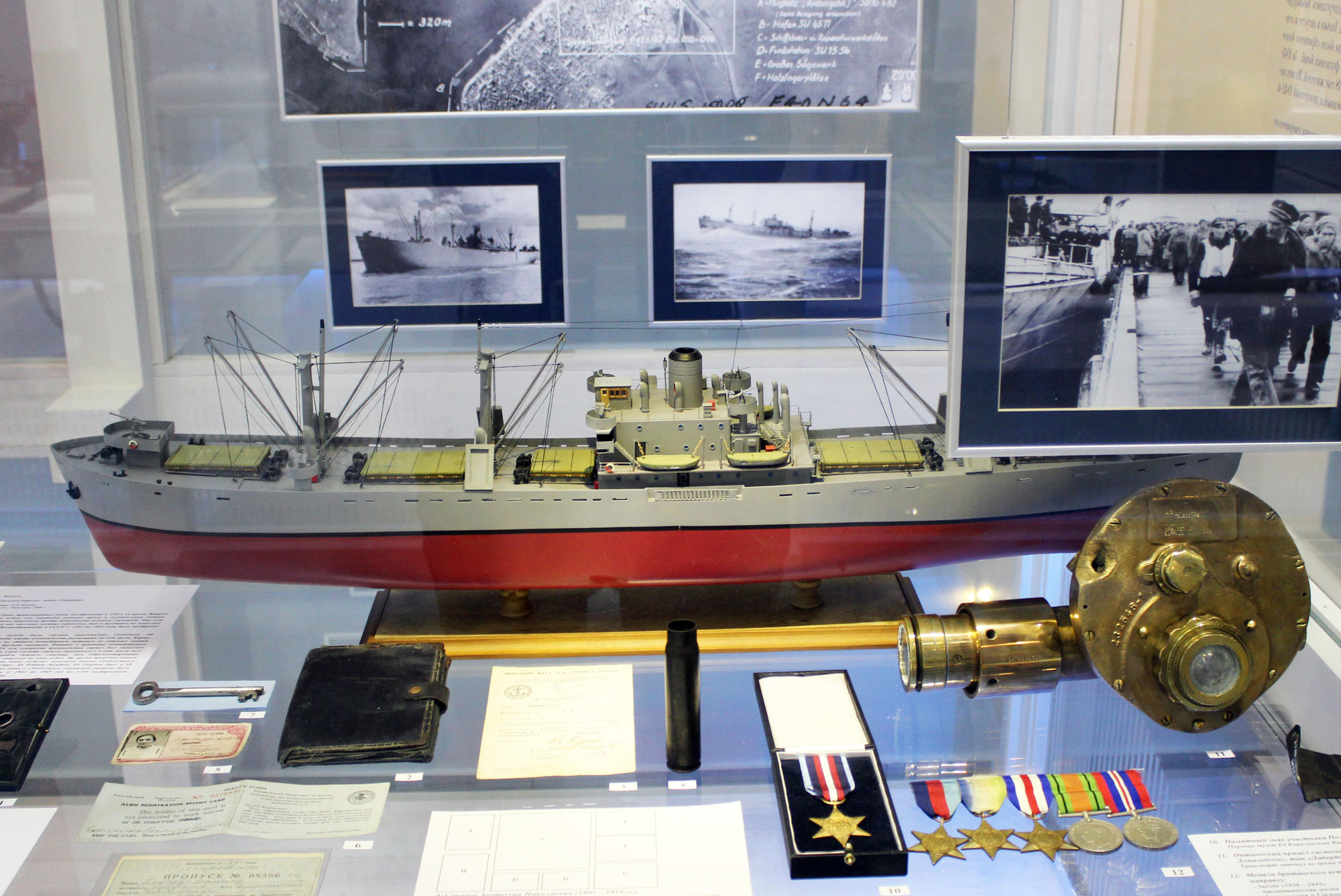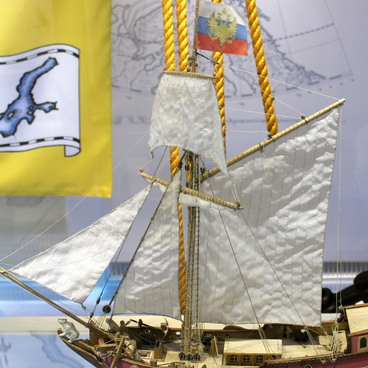Liberty Type Vessels represent a series, comprising multitude of cargo ships built in the USA during World War II for land lease supply, and compensation for the US and UK merchant fleet losses incurred by attacks of German submarines.
In the course of five years of World War II, 2710 ships were built. Their length was 134,6 m, breadth -17,4 m, draft - 8,5 m. The Liberty type design was based on British ‘Ocean’ type vessels upgraded with a view to implementing new tasks of mass and speedy production. This fast manufacturing was ensured through application of innovative technology: vessel was assembled at a wharf from prefabricated blocks supplied by manufacturing plants. The details were standardized with a view to optimizing the assembly.
The hull components were electrically welded together rather than riveted; this cut the time of manufacturing and made the ship lighter. A shortcoming of welds was the hull strength retrogression: incipient cracks forming as a result of wrongly chosen steel grade or mechanical damage, quickly spread not constrained by rows of rivets and the transport craft often broke apart on high seas during their voyages. The Liberty type ship specified service life was 5 years but the majority of those ships kept on going after the war as well.
Liberty ships were equipped with steam engines working on heavy fuel oil. This ensured that fuel tank area was cut. The ships for UK were produced with solid fuel-fired boilers as there were sufficient reserves of coal on the Islands while petroleum refining industry did not exist.
Liberty ships were double-deckers with twindeck i.e. space between decks. On the upper deck, masts with booms of various lifting capacity were mounted enabling the crew to handle cargo singlehandedly in unequipped ports. Cargo sections were located in holds.
To defend the ship against enemy attacks the following ordnance was mounted fore and aft: quick-firing guns of 76 mm and 102 mm caliber, and automatic anti-aircraft guns. The crew included 40 to 60 seamen and 30 to 40 cannoneers.
Transport vessels of Liberty type were christened after outstanding citizens. The first vessel of the series acquired the name of American revolutionary Patrick Henry. The right to choose a name for ship was awarded to those who bought the war bonds of the US government in the amount exceeding 2 million dollars.
In the course of five years of World War II, 2710 ships were built. Their length was 134,6 m, breadth -17,4 m, draft - 8,5 m. The Liberty type design was based on British ‘Ocean’ type vessels upgraded with a view to implementing new tasks of mass and speedy production. This fast manufacturing was ensured through application of innovative technology: vessel was assembled at a wharf from prefabricated blocks supplied by manufacturing plants. The details were standardized with a view to optimizing the assembly.
The hull components were electrically welded together rather than riveted; this cut the time of manufacturing and made the ship lighter. A shortcoming of welds was the hull strength retrogression: incipient cracks forming as a result of wrongly chosen steel grade or mechanical damage, quickly spread not constrained by rows of rivets and the transport craft often broke apart on high seas during their voyages. The Liberty type ship specified service life was 5 years but the majority of those ships kept on going after the war as well.
Liberty ships were equipped with steam engines working on heavy fuel oil. This ensured that fuel tank area was cut. The ships for UK were produced with solid fuel-fired boilers as there were sufficient reserves of coal on the Islands while petroleum refining industry did not exist.
Liberty ships were double-deckers with twindeck i.e. space between decks. On the upper deck, masts with booms of various lifting capacity were mounted enabling the crew to handle cargo singlehandedly in unequipped ports. Cargo sections were located in holds.
To defend the ship against enemy attacks the following ordnance was mounted fore and aft: quick-firing guns of 76 mm and 102 mm caliber, and automatic anti-aircraft guns. The crew included 40 to 60 seamen and 30 to 40 cannoneers.
Transport vessels of Liberty type were christened after outstanding citizens. The first vessel of the series acquired the name of American revolutionary Patrick Henry. The right to choose a name for ship was awarded to those who bought the war bonds of the US government in the amount exceeding 2 million dollars.



